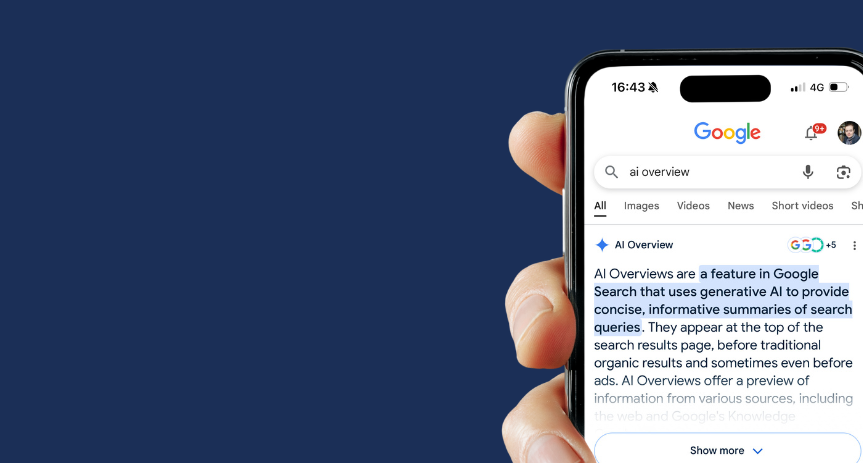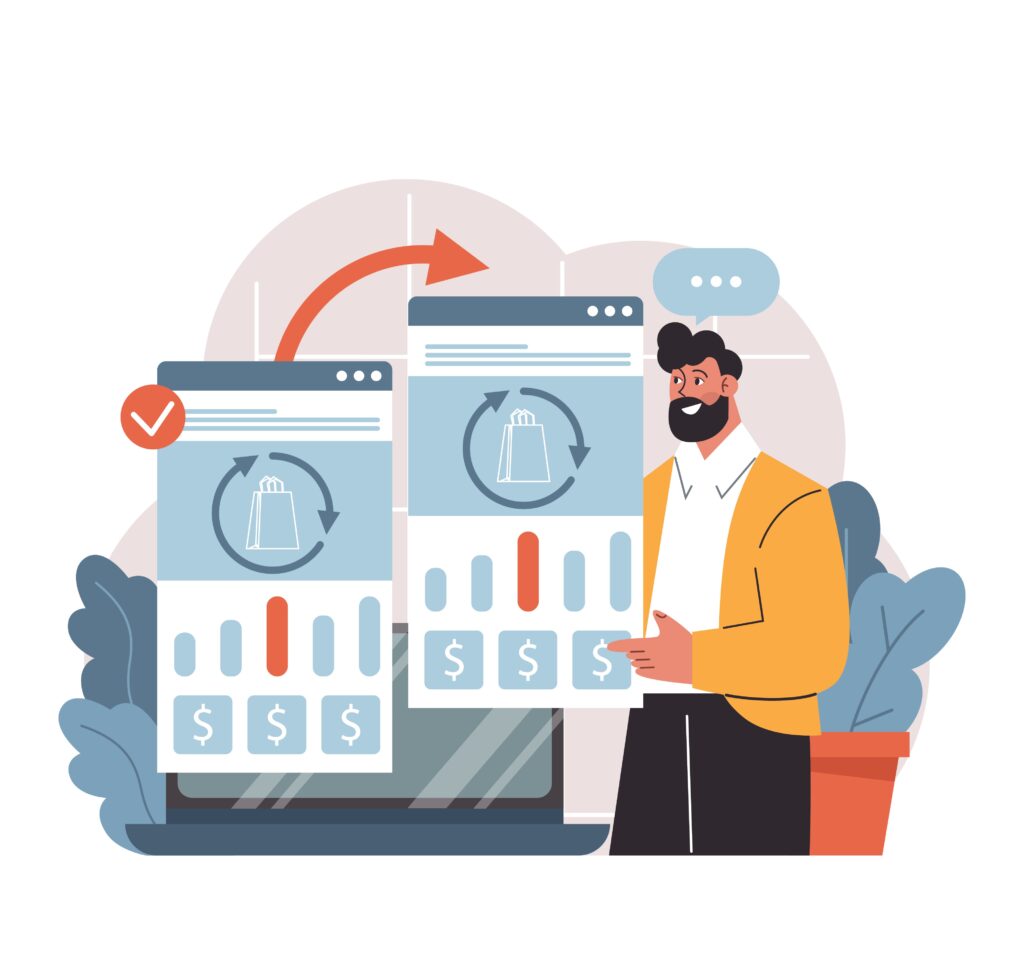In my previous blog post, we delved into the crucial question of WHY when it comes to developing a personalisation strategy. We explored how well-defined business objectives can serve as the foundation for brands and campaign experts to align their efforts and encourage collaboration among digital and marketing teams. Now, let’s progress to the next phase of the personalisation journey: determining the relevant audiences, or in other words, answering the question of WHO.
“The fact that your target audience is not listening is not their fault, but yours. If your story is not getting through, you should change your approach, instead of shouting louder.”
Seth Goden - author, entrepreneur, marketer and public speaker

Despite having well-defined objectives and exceptional content, many personalisation campaigns often fall short due to a lack of relevant audiences. This irony is aptly expressed by marketing expert Seth Godin, renowned for his insightful books on the subject (including my personal favourite, Small is the New Big). Seth emphasises the importance of addressing the WHO aspect in marketing initiatives and campaigns. An illustrative real-life example of neglecting your audience’s needs is distributing flyers indiscriminately in a town centre, assuming that everyone there is actively shopping for your product. While a few individuals might pick up the flyer and some may even read its contents out of politeness, it’s challenging to gather any meaningful information about these individuals through such a spray-and-pray technique.
Now, let’s take this concept a step further into the digital realm. We encounter similar marketing techniques in the digital landscape, such as the staggering number of emails that fail to capture the attention of more than 75% of recipients or homepage display banners that target “ALL” visitors regardless of their interests, preferences, or intentions. In these instances, everyone is treated as a potential customer, disregarding the power of personalisation. It’s important for marketers to recognise that they now have access to a wealth of behavioural data about their customers and online visitors. They can leverage advanced tools like Customer Data Platforms (CDPs) and social media platforms such as Facebook Custom Audiences to gain insights and understand specific segments. If you’re interested in diving deeper into this topic, I recommend checking out this enlightening article on the perils of “Spray and Pray” marketing.
Breaking the audience definition challenge down
To answer the Who? of my personalisation campaigns — I break the audience definition challenge in 3 parts:
Selection criteria: Business rules that define audience qualification criteria
Audience on-boarding: Ensure I can onboard or even find the audiences we need
Opportunity size: Work out whether benefits of executing campaign for identified number of potential customers outweigh costs of creating and executing the campaign
Selection Criteria
Rule #1: Derive your criteria from your campaign goal
Identifying the audiences that offer the greatest potential for achieving our marketing goals is paramount. However, it’s important to apply the right criteria to ensure our campaigns resonate with the intended recipients. I recently encountered an email from an airline that claimed to provide a personalised message, urging me to complete a flight booking I had abandoned a month ago. Unfortunately, this particular campaign failed to consider the simple “recency” criterion accurately. Instead of driving me towards the purchase funnel, it left me with a sense of being spammed. It’s worth noting that a recency criterion of one month might be effective for a different campaign by the same airline. For instance, it could generate consideration for future personal or business trips with the airline.
For a campaign to up-sell AirPods, chances of engagement are much higher if you target customers browsing your digital estate on iPhone rather than a Samsung phone.
Defining audiences carefully during the planning phase can also help avoiding wastage of marketing money on audience that are not relevant for your campaign. A simple example is an acquisition campaign for new customers where you can reduce CPA by identifying and excluding your existing customers.

Rule #2: Use customer data and behavioural data to create targeted audiences
Digital visitors provide us wealth of data that can be converted into information to decide what audiences may work the best for a marketing campaign. This information can be categorised as User-Identity Information and Visitor Digital Behavioural Information.
User-Identity Information
Digital Marketing defines a customer as visitor to your digital estate — who you identify as a unique individual consistently across any channel. Typically these are customers who have provided you some PII information in past. For your existing customers, a wealth of information is available in CRM databases which can be used to personalise digital experiences. Typical examples are Customer Life Time Value (CLTV), Customers who haven’t been online for a while (for an SMS or Push notifications based campaign), Gender, Demographics, Purchase patterns to name a few.
A few examples might include:
Increasing online sales
Reducing customer churn
Improving customer satisfaction
Generating leads
Privacy is an opportunity: Engaging in open and productive discussions with your Regulatory and Privacy teams is vital to determine which customer information can be utilised for marketing purposes, both internally and externally. It’s crucial to strike a balance between the data you gather and the level of personalisation needed for your campaigns. While it may not always be necessary to present a one-to-one offer in a display advertisement, a personalised creative message can be sufficient to capture attention. By considering the privacy and regulatory implications, you can make informed decisions about the extent of customer information required to effectively personalise your marketing efforts.
Digital Behaviour
An online visitor is anyone who engages with your brand through digital channels. This includes both new individuals, often referred to as prospects, as well as existing customers. When it comes to these interactions, the data collected by digital channels cannot be directly linked to any specific customer relationship management (CRM) information, resulting in anonymisation. However, this behavioural data, often tracked using cookies and device IDs across multiple sessions, serves as a valuable source of insights for creating powerful audiences. A common example is Basket Abandoners, where you can retarget individuals who have left items in their cart without needing to know their specific identities when they return to your site. Another example is the use of recommendation tools, which leverage algorithms to analyse the products you show interest in, compare this pattern with similar visitors, and provide personalised recommendations for potential purchases. These insights derived from digital behavioural data can significantly enhance your marketing strategies and improve the overall customer experience.
Depending upon business objective of marketing campaign, you may decide to use either of these 2 types of information or combination to create target audiences.
A valuable tip is to leverage your analytics data to gain insights into the behavioural patterns of different segments among your digital visitors. By analysing this data, you can apply the findings to the specific audience you want to target. I recently came across a compelling case study where analytics data led marketing teams to the discovery that over one-third of their pay-per-click (PPC) brand search terms were being utilised by their existing customers for logging in. Armed with this knowledge, they were able to save millions of dollars by identifying and excluding existing customers from campaigns designed solely for customer acquisition. This case study exemplifies the power of analytics in optimising marketing strategies and making more efficient use of resources.
In summary, follow these steps:
Understand who’d be right audiences for your campaign, given the objective of the campaign
Make use of customer data available in CRM and digital behaviour data to while defining criteria for relevant audiences
2. Onboarding audiences for the campaign meant for a set of your existing customers
When implementing a campaign aimed at targeting specific customers within your existing base, whether for segment-based or one-to-one personalisation, a crucial step is onboarding customer offline data to digital channels. Data activation tools such as CDPs provide this capability. Regardless of the technology you choose, the underlying process consists of several fundamental building blocks.

Customer-identification
In digital channels, it is crucial to establish a method for identifying customers using non-personally identifiable information (non-PII) that remains consistent across all touch-points. This is particularly important for organisations operating across multiple channels to ensure a seamless customer experience. For instance, a customer who has made a transaction through telesales should not be bombarded with emails and push notifications to complete an abandoned basket for the same journey solely because offline and digital channels use different identifiers for the same customer. It is essential to consider privacy and regulatory processes while implementing such identification systems to protect customer data and adhere to relevant guidelines. By maintaining consistency in customer identification across channels, you can provide a more personalised and streamlined experience while respecting privacy regulations.
Customer-data extraction
Ideally, an automated process should be in place to extract customer IDs that meet the selection criteria for the target audience, along with other relevant attributes necessary for building a personalised experience. This process involves retrieving data from offline systems such as CRM platforms. By automating this data extraction, you can streamline the process and ensure that the right customers are included in the target audience, enabling the delivery of tailored experiences. This could include determining the % discount that a specific customer is eligible for at the basket step, among other personalised attributes.
Customer-identifier mapping between offline and online channels
In situations where the customer identifier differs between offline and digital channels, a mapping process is required to convert the extracted data from the previous step into a format that can be identified in the digital realm. This mapping process ensures that the customer data collected from offline sources can be effectively linked to the corresponding digital identifiers. By establishing this connection, you can seamlessly integrate offline customer information into your digital marketing efforts and enable personalised experiences across channels.
Customer-data on-boarding
This final step involves making extracted data available to digital tools so that a customer can be identified and presented with an experience driven from using corresponding offline data (or combination of digital behaviour data — both owned and paid media)
Often overlooked during campaign-planning, not having a clear plan for on-boarding may delay campaign execution as above mentioned steps require involvement of various teams, especially ones that own first-party offline data.
In Summary:
-
Define the process of audience on-boarding, if needed and align with responsible teams for data-extraction and on-boarding to digital channels
-
Automate the processes to avoid any manual intervention and errors
-
Ensure you have a nod from Privacy & Regulatory teams and clarity around what data you can share and what you cannot
3. Opportunity Sizing
Defining a relevant audience for a campaign offers a significant advantage in estimating the potential benefits of that campaign. By leveraging digital data and employing statistical modeling techniques, you can determine the size of the potential audience and use this information to assess the feasibility of executing the campaign. Essentially, it boils down to a simple ROI question. Every campaign requires effort and time to create, which incurs costs for the business. Therefore, it may not be beneficial to run a campaign promoting a 5G ready phone in a town where the penetration of 3G networks is less than 1%. When evaluating the potential success of a campaign, it’s essential to consider factors such as the actual number of potential customers (keeping in mind that even 1% of a large city’s population could still be more than the entire population of a mid-sized city) and the potential average order value (for instance, significant enterprise orders that are worth hundreds of thousands of dollars). Taking these factors into account allows for more accurate calculations and informed decision-making.
Note that not every campaign has to be sales oriented. A service-campaign to inform a couple of households in a remote area about an upcoming electric-outage, using SMS doesn’t need to do any opportunity sizing. Here business objective is to have highly-informed and satisfied customers. So go back to your business objective and brainstorm whether you need to size opportunity.
The team at Dynamic Yield has effectively addressed the challenge of segment size in their Primary Audience Framework, advocating for the creation of 3-4 primary audiences instead of numerous smaller segments. This approach ensures a more manageable and focused personalisation strategy. As an example, the article highlights an American retailer that employed a staggering 422 segments as part of their personalisation program. Such a large number of segments can be overwhelming and challenging to effectively target and personalise content for. By adopting a more streamlined approach with a smaller number of primary audiences, marketers can achieve better focus and optimise their personalisation efforts.
In Summary:
Align with your business objective whether it’s required to size the opportunity
If yes, make use of data to find out potential benefit and do cost-benefit analysis to assess whether its right to execute your campaign
Takeaway
One crucial aspect of every digital marketing campaign is identifying audiences that align with the campaign objectives, can be readily accessed for one-to-one personalisation, and are substantial enough to yield business benefits. Answering the question of WHO enables you to enhance conversion rates significantly by targeting only the relevant audiences. This approach also helps you save valuable marketing resources by avoiding unnecessary targeting of unintended audiences. By focusing your efforts on the right audience segments, you can maximise the effectiveness of your campaign and achieve better results.
In next post, I’ll share how data can be used to identify most relevant locations where personalised experience should be shown — answering WHERE?
Get Experience Optimisation Insights
Sign up and get the latest Experience Optimisation insights and tips straight to your inbox.






